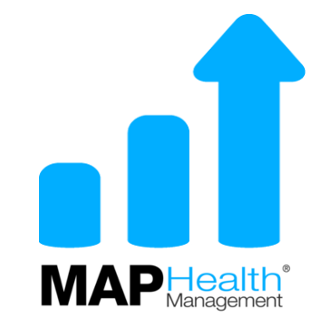Changes in Healthcare: Your Guide to Navigating the Complex World of Health Insurance Plans
January 12, 2016 Karen Pilley

As featured in the January issue of Sober World Magazine. Click here to download the issue.
Successfully getting from Point A to Point B has always required the ability to understand potential challenges and obstacles. Having a good foundation of knowledge in order to make an important decision is important which is precisely where we find ourselves today as we attempt to understand and navigate the complex world of health insurance plans.
According to a 2013 report by the Kaiser Family Foundation, premiums for the average American working family topped $16,000 for the first time in history. Employees paid, on average, more than $4,500 toward that cost which does not include co-pays and deductibles. In this fast-paced world of reimbursement change, those numbers are likely higher today. The sobering fact is that reimbursements from insurance companies are declining and we anticipate that they will continue to do so. Far too often we see consumers who have purchased a health insurance plan that in essence, provides catastrophic coverage and little else until high deductibles are met. When the time comes to rely on an insurance policy, consumers all too often realize that they have health insurance and cannot afford to use it.
Health insurance plans change each year; services and treatments that were reimbursed one year does't necessarily mean that they will be reimbursed for the same amount in the next. It is more important than ever for the consumer to become educated with regard to these changes.
One example is the utilization of healthcare providers who are considered to be Out-of-Network. Health insurance payers have made it increasingly difficult for consumers to utilize healthcare providers who operate Out-of-Network. Health insurance companies (a.k.a. Payers) have realized that Out-of-Network usage can negatively impact their bottom lines and rather than absorbing that expense, the cost is passed along to the consumer, through higher co-pays and deductibles.
The responsibility to understand what is being purchased (a specific health insurance plan) resides with the consumer and now, more than ever, the phrase buyer beware is fitting. Ignorance is costly and the misconception that having insurance equates to having coverage can be shocking. In order to navigate this evolving world of reimbursement, consumers must learn to ask the right questions for their individual needs before making a commitment to any given plan. For consumers who have insurance through their employer, communicating with the Human Resources department can prove to be very valuable. Additionally, most (if not all) health insurance payers employ patient representatives who are available to answer questions and assist with explaining the nuances of the available plans.
The critical part is learning what questions to pose and to whom. No one can predict the future therefore the consumer will always have to make an educated guess and it is important to place the emphasis on educated. By asking questions and taking advantage of available resources, educated consumers can successfully navigate this complex arena.
If you want to learn how to best understand your health insurance plan and make educated decisions on, for example, finding an addiction treatment facility best suited for your loved one, there are steps you can take. Below are questions you can ask and resources to use that will help get you started.
- Do I fully understand the benefits available to me for the services I need?
- What additional costs would I incur by using an Out-of-Network provider? Is using an In-network provider the better choice?
- How informed is the treatment provider on my benefit plan?
- Validation of your benefit interpretation by the payer or employer is your best resource. Whenever possible, get this information in writing.
- Comparative selection is key. Not all treatment providers are created equal and everyone has different needs. Ensure your selection is made using the most important criteria to you.
Additionally, it is important to stay informed even after choosing a health insurance plan. Most health insurance companies mail newsletters and information guides throughout the year and it is helpful to read this material in order to stay abreast of the future of healthcare.
One such message regards the migration toward two distinct areas: preventative medicine and telemedicine. With regard to prevention, consumers have the ability to be proactive in sustaining healthy life choices and payers are far more interested in working with consumers who are motivated to sustain their health and quality of living. Payers have begun to offer preventative well-being services, such as annual physical exams. Consumers pay for these services and are wise to take advantage of them.
Telemedicine, the provision of treatment for an illness by way of telecommunications technology, will soon prove its value to both payer and consumer. Telemedicine is the antidote to increased healthcare costs and is on the forefront of every segment of healthcare. For example, once having been treated for a disease such as addiction, we have learned that the provision of recovery support is a critical component for the patient to maintain sobriety and enter into long-term recovery. Telemedicine technology will be able to offer necessary recovery support which will result in a win-win scenario. The patient who is striving to maintain sobriety will have the benefit of support and resources and the payer will have the benefit of consumers who are better-equipped to maintain sobriety therefore decreasing the odds of relapse and/or a return to inpatient treatment.
Health insurance plans are complex and complicated. Consumers can no longer decide on a policy based on the insurance company the level of benefit is determined at the plan level. The amount of healthcare dollars Americans are spending has dramatically outpaced both wage increases and the rate of inflation. We can expect reimbursement rates to continue to decline while Americans will continue to pay more for healthcare. When it comes to navigating the ever-changing field of health insurance policies, consumers need to educate themselves and take steps to ensure they are successfully navigating this changing environment.

Karen Pilley is the Chief Operating Officer at MAP Health Management, LLC in Austin, TX. She has more than 30 years of experience in healthcare billing and collection, revenue cycle management, government and managed care payer regulation and compliance.








